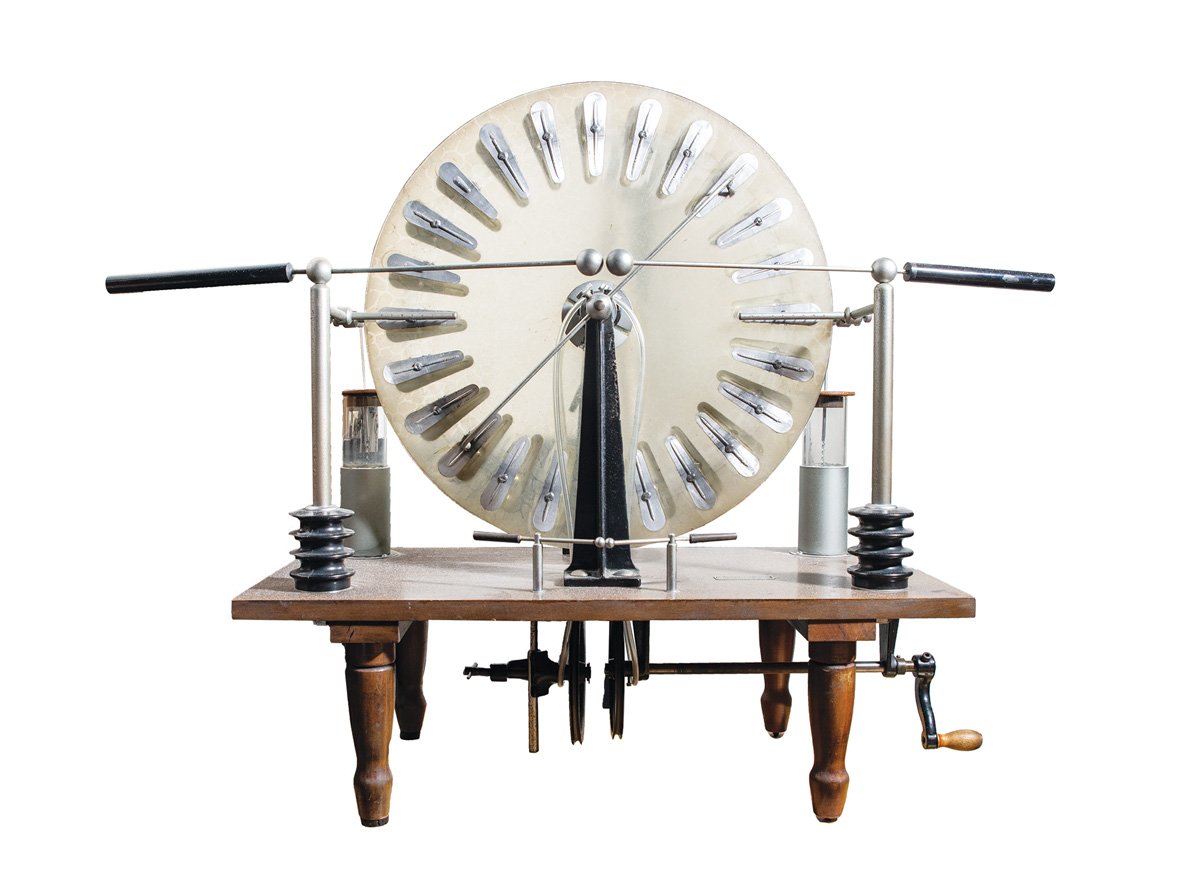What in the World Is the Wimshurst Machine?
Image: Lance Hayashida
Developed in the 1880s by British inventor James Wimshurst, this spinning contraption generates the same kind of static electricity that makes your hair stand on end. In the era when it was invented, electrostatic machines of this sort were the primary means of generating high voltage and were frequently used to power X-ray tubes. When an operator turns the machine’s crank, its two wheels spin in opposite directions. Small electrical charges on the discs are amplified and gathered in two jars, one for positive charges and the other for negative ones, placed on either side of the wheels. The charges then travel through rods to two metal balls positioned close to each other in front of the spinning wheels, where they are discharged as giant sparks.
“This process can snowball, creating up to hundreds of thousands of volts of charge,” explains Zach Tobin (MS ’13), a staff member who uses this Wimshurst machine as part of his job managing physics demonstrations for Caltech’s Feynman Lecture Hall (see video below). The machine can be found in classrooms around the world as a tool to teach the principles of electrostatics.

